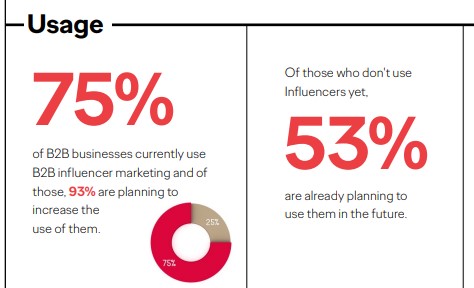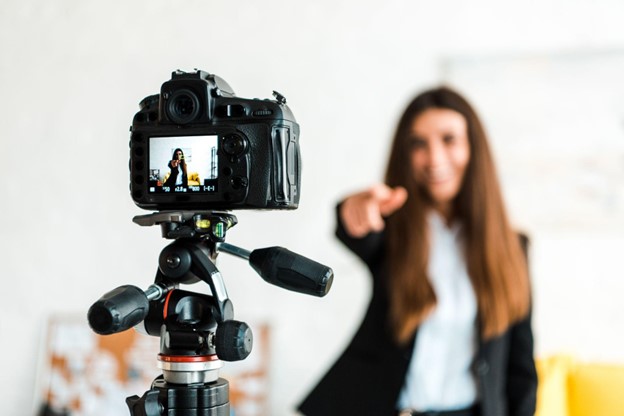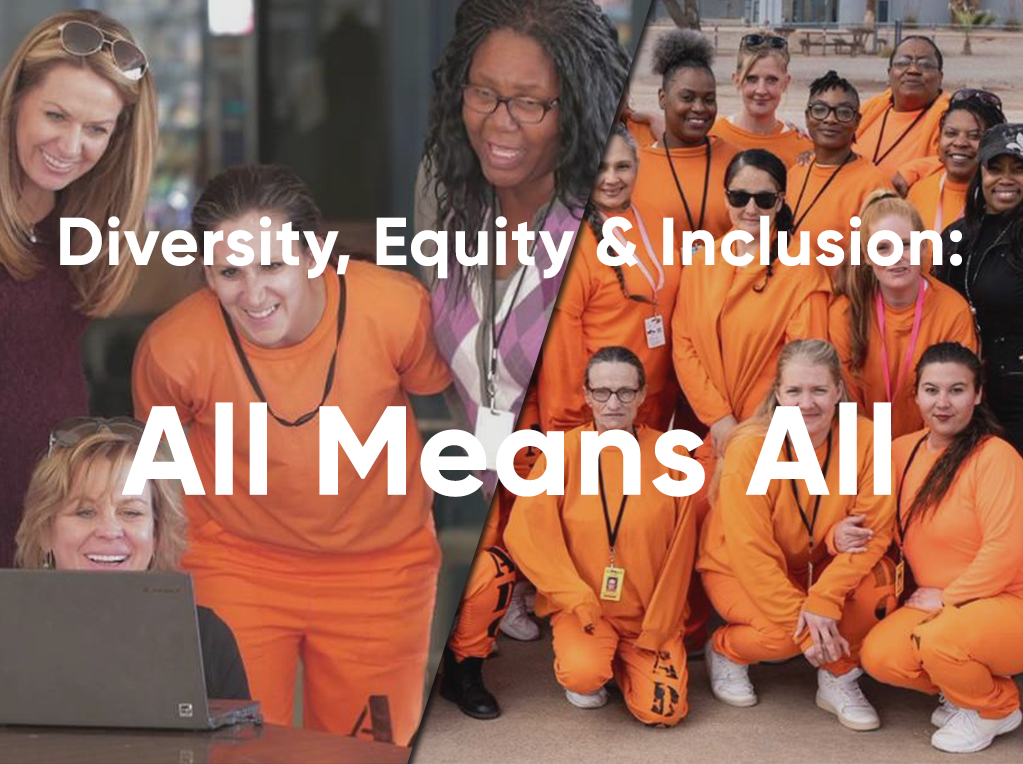Snake Oil or Savvy Strategies? Decoding the Analyst and Influencer Hype
In 2024, the B2B marketing world is defined by tactics most in the industry couldn’t have imagined just a decade or so ago, and having an influencer marketing strategy is one of them. In fact, ten years ago, the idea of an influencer was a new concept—one that lived mostly in B2C industries such as fashion, beauty, and fitness.
Fast forward to now, and influencer marketing is happening in every facet of business, including even the most traditional B2B sectors. The hype, as they say, is real.
But what about the payoff?
Like with any fast-growing business trend, B2B marketers have felt the pressure to get on board and keep up with the proverbial Joneses when it comes to influencer marketing. As a result, a gap has developed between what marketing analysts say the ROI is to the C-suite teams approving budgets, and the actual ROI that’s delivered in the form of leads, sales, and revenue.
And while there’s no doubt that successful influencer marketing can be real and impactful, it makes up a minority portion of the total B2B influencer landscape. In this guide, we’ll help you decode fact from fiction when you’re looking for influencer partnerships, then walk through the right things to look for in an influencer that can really deliver for your brand.
Quick Takeaways:
- Influencer marketing is already used by 75% of B2B brands and is growing at a rapid pace in the B2B sector.
- Vanity engagement metrics and follower counts are often not indicative of an influencer’s real audience reach.
- In fact, intentional follower fraud is prevalent in the influencer marketing world, costing brands a collective $1 billion in annual lost revenue.
- Brands must have their own thorough vetting process and look for influencer partnerships that are meaningful and highly brand-relevant.
What’s the Deal with B2B Influencer Marketing?
Influencer marketing is fast becoming a ubiquitous part of B2B digital marketing at large. Today, 75% of B2B brands use influencer marketing and of those, 93% are planning to increase their use of them going forward. Of the group that doesn’t use them currently, 53% plan to in the future.

“Much like the digital transformation of marketing itself, influencer marketing’s development was accelerated during the pandemic,” wrote LinkedIn’s Ads Marketing Leader and Global Head of Content, Steve Kearns. “But it’s no fluke, no fad, and certainly not something only B2C brands [benefit] from.”
The question then, isn’t whether influencer marketing is gaining a place in the B2B world. It has one. The question is—do B2B marketers really know what they’re doing?
Decoding the Influencer Hype
The hype about influencer marketing comes down to one big advantage: human connection. Even in the world of business buying, prospects want to feel emotionally connected with brands—a whopping 84% of B2B buyers make decisions based on their emotions.
Influencers know that more than anyone. It’s their job to tap into that advantage, connecting with their audiences (and, by proxy, the brand’s) on a personal level, showing marketing teams that they can deliver by driving leads and sales. There are two primary ways they define this capability:
- Follower Count: With thousands or even millions of followers, many influencers present brands with an opportunity to get in front of a new and bigger audience of high-fit buyers.
- Engagement: Influencers use metrics like likes, comments, and shares to show they can engage their audience meaningfully.
The inherent problem with these metrics is that they’re up for subjective interpretation. Follower counts can be meaningless when the audience hasn’t been built in a targeted, intentional way. Followers can even be bought using automated services to boost “engagement.” In turn, engagement metrics meant to demonstrate real connection with an audience don’t actually have an impact at all.
Further, marketer analyst jargon around “engagement” and “visibility” is all talk when it doesn’t actually translate to leads and sales—something that’s hard to track and report on when prospects come from an account that belongs to an influencer, and not the brand itself.
The (Un)Ethics Behind Influencing
When it comes down to it, the success of B2B influencer marketing strategies is largely determined by the ethical integrity of influencers themselves. In a landscape where many B2B companies and their marketing teams are trying influencer marketing for the first time, an opportunity exists for influencers to inflate their numbers and even flat-out deceive without brands knowing the difference.
Unfortunately, these unethical practices aren’t uncommon. One CBS report estimated that brands collectively lose more than $1 billion to influencer fraud in a year, mostly due to inflated follower counts and fake personas developed specifically to squeeze payments from brands who don’t know better.
Even “real” followers can be intentionally touted as authentic when up to 90% are no longer active on that given platform—and thus will never see a brand’s content posted by the influencer.
“The influencer marketing industry has grown and become a more complex ecosystem, and the more intrinsically complex an ecosystem becomes, the more opportunities for fraud arise,” said industry expert Daniel Avital in the CBS report.
Separate research by KlugKlug, a B2B tech platform for influencer marketing, found that of the 8 million influencer profiles they reviewed on Instagram, 4.6 million had 60% “fake or suspicious” followers. Viraj Sheth, CEO and co-founder of Monk Entertainment (an agency that manages influencers and content creators), explained the larger impact of this problem in an article covering the research report:
“The essential metrics in influencer marketing, such as engagement and followers, are compromised, leading brands to question the authenticity and effectiveness of their partnerships,” he explained in the article covering KlugKlug’s report.
“While the entire industry is not guilty of employing such malpractices, the presence of such influencers creates a trust deficit that affects marketing decisions,” he adds.
In many cases, this intentional metrics inflation spills over eventually to B2B companies themselves, as marketing analysts settle for reporting on partly or completely meaningless engagement numbers in an effort to demonstrate promised ROI to the C-suite.
It’s a cycle of wasted dollars and wasted effort that’s costly to B2B brands, and can even compromise their reputation if an influencer partner’s unethical behavior comes to light.
Building an Influencer Marketing Strategy that Delivers
To execute real, authentic, effective influencer marketing strategies, B2B brands have to dig deeper than vanity metrics and build meaningful, brand-relevant partnerships. This means focusing less on straight follower count and more on an influencer’s ability to connect with their audience, create community, and deliver high-quality content.
As you vet potential influencers for your brand, consider the following:
- Longevity: How long has the influencer been active? Have they built a steady following over time? Amassing thousands or millions of followers in a very short time is a red flag and indicator that those followers are fraudulent.
- Expertise: Does the influencer actually have knowledge and experience in your niche? Today’s audiences will quickly recognize when an influencer is missing the expertise they claim to have, so it’s important to partner only with ones who can speak authentically about your brand.
- Track Record: What other brands has the influencer worked with? How has their content quality been over time?
- Audience Engagement: How well does the influencer engage directly with their audience in their content, comment sections, and elsewhere? Does their audience trust them?
- Reporting: How does the influencer intend to report on your campaign’s performance? Is their approach transparent? Are their metrics meaningful?
Keep in mind that a large following isn’t everything when it comes to influencer marketing success. This is especially true for smaller brands or highly niche ones. An influencer that has built deep trust with their audience and delivers exceptional content is always a better choice than one with a large following but no real connection.
In the end, it’s important to remember that the savviest group of all is your prospect and customer base. Choosing the right influencer partners demonstrates to your target audience that you know them and are committed to delivering value for them on every channel.
Televerde’s Partner Program Enablement services help clients manage influencer partnerships with confidence. Schedule a call with our team to learn more.


